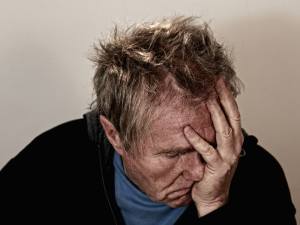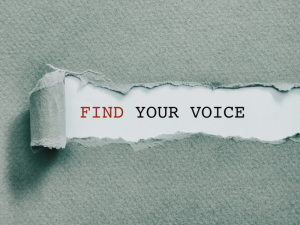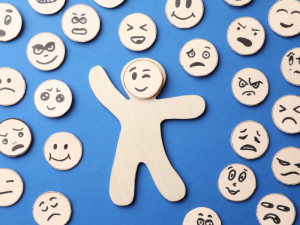Delayed-onset muscle soreness or DOMS is exercise-related muscle pain, which often peaks a day or two after the event. It is known as muscle fever, a beautiful exotic explanation to describe the distinctive muscle pain and soreness that nearly everyone experiences after intense or unfamiliar exercise. Muscle fever is a meaningful term because DOMS makes muscles feel feeble as well as sore.
Most people with DOMS describe a dull muscle ache that develops 24 to 48 hours after new, strenuous or excessive exercise. It is usually localised with muscle stiffness and tenderness often in the legs. DOMS is annoying particularly if you’re starting or restarting an exercise regimen, and is one of the main things that discourages people.
Are you at risk
- Exercise newbies are more risk, take is steady to not be a victim
- Changing your exercise routine, for example, lifting a heavier weight or increasing reps or sets
- Eccentric contractions where muscles are trying to elongate can cause DOMS far more readily other contractions
- Dehydrated is a factor but DOMS can be triggered by virtually any significant physical or metabolic stress.
What causes DOMS?
The exact cause of DOMS is unknown, it is often described as the consequence of microtrauma and/or metabolic stress. Microtrauma is just another way of saying mechanical stress, while metabolic stress is a more sophisticated way of looking at muscle cells which are like little chemical factories, producing molecules and by-products from all activities, they release more when we work more intensely. While these theories are widespread research does not support these ideas, even after decades of trying to identify the various chemical produced by cells during exercise, research has not established a link between DOMS and any specific biological markers
Here’s the science bit
The resulting microtrauma causes a cascade of events within the muscle. Myofibril tears or muscle strain result in an inflammatory response and an increase in blood flow to the “damaged” tissues. Along with a chemical soup of hormones, proteins, intramuscular fluid and electrolyte to assist with healing, but these substances can irritate nerve endings and cause pain.
Symptoms usually appear 24 hours after activity after sleeping. The next day muscles are entirely flooded with excess blood and other fluids, which may cause temporary inflammation and result in extra pressure on affected muscles, causing the BIG OUCH! Symptoms often persist for up to 72 hours, interestingly some people don’t notice discomfort until the second day two.
DOMS can also result in a short-term reduction in joint range of motion (stiffness) and possibly be swelling of the affected muscle groups. This can alter muscle firing patterns and is thought to be the reason muscle strength can be temporarily impaired.
How is DOMS Diagnosed?
DOMS is a clinical diagnosis but should clear up in a few days, if not then it worth checking in with a manual or hands-on therapist such as an osteopath I’m biased, but the important thing is to rule out other a significant injury such as muscle strains, tears, or ruptures.
Self-help treatment?
Active rest and anti-inflammatory measures such as ice are the recommended first steps, although some research supports pain reduction using heat. Over the counter or prescribed NSAIDs may offer pain relief in extreme cases, but long-term use is not recommended. Please speak with a pharmacist or your GP if you are considering this. Gentle, soft tissue treatment such as osteopathy or massage) has been shown in studies to reduce pain and the duration and severity of DOMS.
Things to avoid
- Deep tissue massage should be avoided during the first 24 -48 hours.
- Excessive muscle stretching is not helpful in the early stages of DOMS
- Avoiding vigorous exercise during the recovery phase is helpful too, your muscles will have reduced capacity to cope with shock absorption, in-coordination, altered muscle recruitment patterns, reduced strength balance and contraction intensity.
Preventing future attacks
- Grade up your exercise program slowly and gradually
- If you are in the gym increasing loads, sets, reps and weights by 10% per week is useful advice
- A lengthening muscle is more likely to be affected by DOMS, this is called an eccentric exercise. For example in a simple bicep curl, the eccentric or lengthening contraction is the part of the exercise when you lower the weight back down again.
- Plan a proper cool down sequence especially for your quadriceps
When to seek treatment
- If the pain or stiffness is still present and not resolving more than 72 hours post-exercise.
- If the pain came on during the exercise, not the day after it’s not DOMS and more likely to be a strain, sprain or muscle tear.
- You would also be wise to seek help if the pain is located in and around joints, or if there are swelling and discomfort.
- Severe cases of DOMS can be mistaken for a muscle strain or injury.
Health warning
If the muscle soreness isn’t improving after two to three days or if you start to have discoloured dark urine, you should seek urgent medical attention. There is an acute severe and dangerous syndrome called Rhabdomyolysis which can lead to serious complications such as kidney failure. It can be caused by direct or indirect muscle injury. Not to alarm you as this condition rare, can be caused by other factors, and some people with the condition have no muscle-related symptoms.
Final thoughts
Some people are more prone to DOMs than others, and the greatest protection is a progressive programme of training. The good news is that keeping moving is the best cure, as most cases of DOMS gradually subside and will resolve within one to three days leaving no lasting effects.
SaveSave
SaveSave
SaveSave







